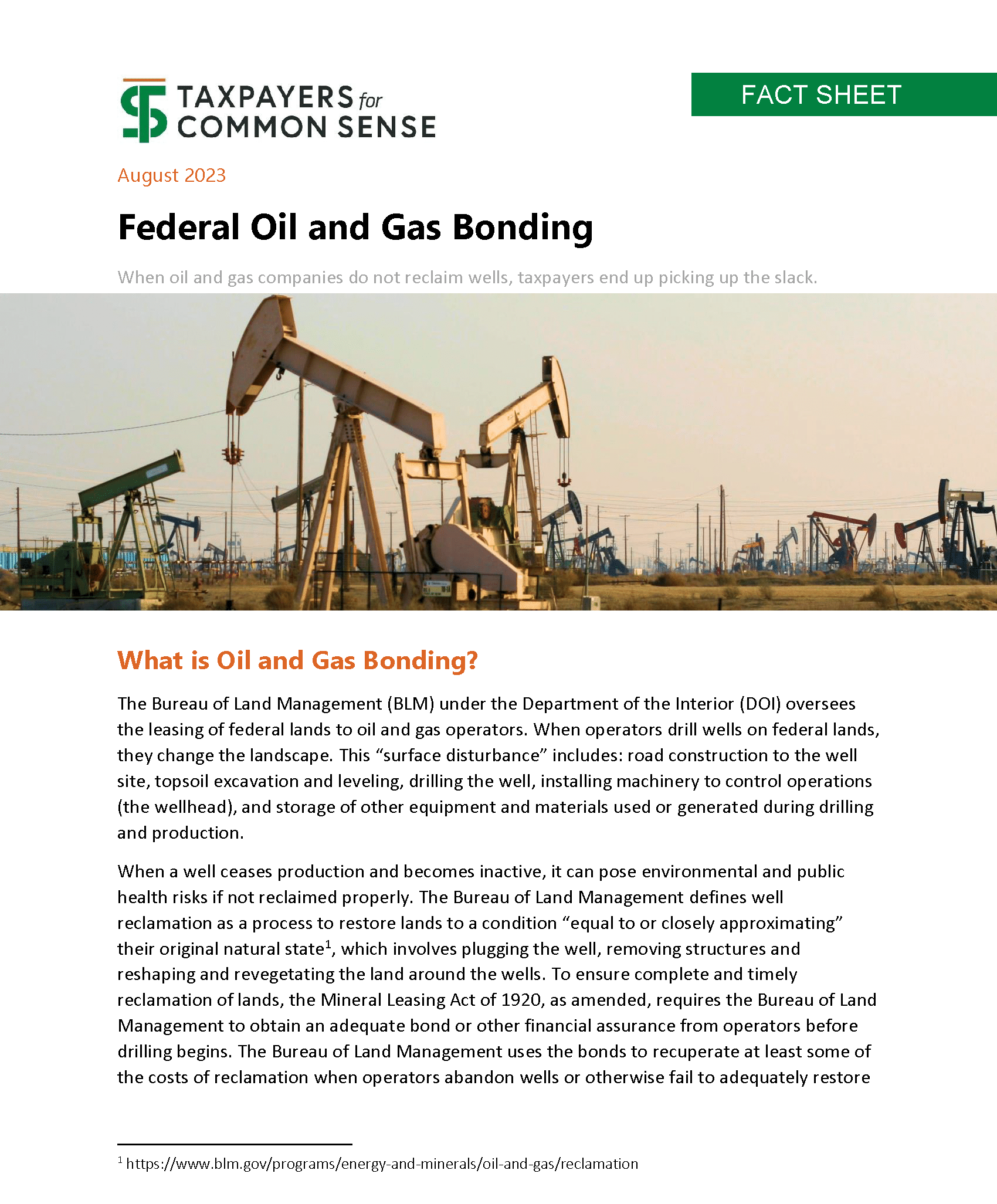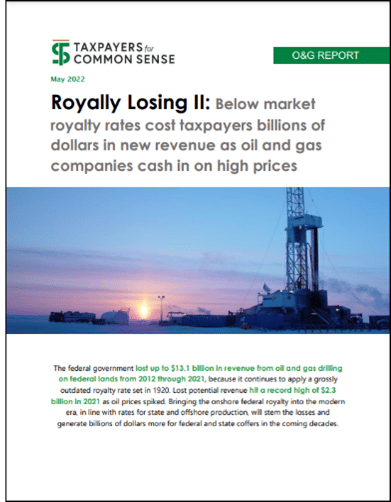Defend Common-Sense Oil & Gas Leasing Reforms to Protect Taxpayers!
Recent Reforms are a Win for American Taxpayers
Century-old policies were padding the bottom line of the profitable oil and gas industry, costing taxpayers billions in lost revenue, and leaving us to cover the cleanup.
Recent reforms have modernized the federal leasing system and secured a fair return for taxpayers. Let’s not turn back the clock.
For decades, taxpayers lost BILLIONS of dollars in potential revenue and were forced to shoulder costly cleanup liabilities due to outdated and below-market leasing terms.
In 2022, Congress took an important step forward by reforming the onshore oil and gas leasing system. Now, the Department of the Interior has codified these reforms and updated the decades-old bonding rates in a new rule.
The new onshore oil and gas rule helps protect taxpayers’ wallets and holds oil and gas companies accountable for paying to clean up after profiting from drilling. It’s just common sense.
CONGRESS: PROTECT THESE IMPORTANT REFORMS
Updated Oil & Gas Bonding Rates
Oil and natural gas producers operating on federal land are required to plug their wells and clean up the surrounding sites after production ends. To ensure the cleanup of these potentially hazardous and environmentally harmful sites is funded, producers are required to post a bond before they start drilling. If a company abandons its wells on a federal lease, or goes bankrupt, the bond is supposed to cover the reclamation expenses. However, for leases on federal land, the required bond amounts had not changed in 60 years and failed to cover the full cost of cleanup.
According to the Department of the Interior, it costs roughly $71,000 to plug and clean up an orphaned well, yet the Government Accountability Office reported that the agency held an average value of $2,122 per well in bonds in 2019 – leaving taxpayers to cover millions of dollars for abandoned wells scattered across federal lands.
The new rule from the Bureau of Land Management addresses this issue by increasing per lease and statewide bond minimums while also eliminating nationwide bonds and unit bonds. This rule better protects taxpayers from having to shoulder the oil and gas industry’s liabilities, keeping communities safe and saving taxpayers billions of dollars.
Market-Rate Royalties
For decades, the federal government employed the same, below-market royalty rate for oil and gas produced on federal lands; for every dollar of revenue a producer made on a barrel of oil, taxpayers received just 12.5¢. This rate of return, or royalty rate, was dramatically lower than what most states charge – Texas charges up to 25% – and what we get from a barrel of oil from the Gulf of Mexico at 18.75%. If a royalty rate of 18.75% had been imposed over the last decade (2012-2021), taxpayers would have received an additional $13.1 billion in revenue.
In August 2022, Congress updated these rates for the first time in over a century, raising the onshore royalty rate to 16.67% for the next 10 years. Often equal to or below the rate charged on adjacent state land, this new royalty rate will bring in billions of dollars in new revenue without impacting production. The final rule by the Department of the Interior codified this update and kept the royalty rate at 16.67% after the 10-year window.
However, more can be done to ensure taxpayers receive a fair return from the development of valuable oil and gas resources. The Department of the Interior should consider charging a royalty rate of 18.75% beyond the 10-year window, as 18.75% is more in line with what many states charge and what the federal government charges for oil and gas production in federal waters.
Up-To-Date Rental Rates
For too long, the federal government refused to raise rent for leases on federal land, charging just $1.50 or $2 per acre for oil and gas developers who were not yet producing on federal land. Because of inflation, taxpayers received less than half of what we should have, losing roughly $292 million over the last decade.
In August 2022, Congress updated these terms and started charging a fair price for holding valuable federal land for the next 10 years. The new rule not only secured these higher rates, but also guaranteed they are regularly updated for inflation after the law’s 10-year period ends.
Updated Minimum Bids
Until recently, the minimum amount companies could bid at auctions for federal oil and gas leases hadn’t been updated for nearly 35 years. Bidders had to pay a mere $2 per acre to purchase leases on federal land. Of the 544,000 acres sold at auction in 2020, roughly 37% of all acres sold received the minimum bid.
Like royalties and rent, this minimum required bid was updated in August 2022. The new $10 per acre rate helps taxpayers get a fair return for valuable federal land and the resources contained in it. The Department of the Interior’s new rule codifies this rate after the law’s 10-year window and regularly adjusts it for inflation.
The Elimination of Noncompetitive Leasing
In 1987, Congress mandated that every oil and gas lease had to be offered in a competitive auction where companies can bid for it. However, they left in a loophole: the day after the auction, a company (or land speculator) could avoid paying a bid altogether by submitting a NONcompetitive offer for anything that didn’t sell the day before.
The result was predictable – companies regularly nominated land they wanted to lease, sat on their hands during the auction, and swooped in the next day to get the lease without even paying taxpayers the meager $2 per acre minimum. Over the last 10 years, more than 2 million acres have been leased with no bid.
Fortunately, this loophole was finally closed by Congress in August 2022, preventing oil and gas companies and speculators from acquiring noncompetitive leases on federal land without actually developing oil and gas resources. The Department of the Interior’s new rule ensures that codes reflect the elimination of noncompetitive leasing.
State Taxpayers Also Benefit from Recent Reforms
Most federal land and oil and gas production on federal land is concentrated in the West. States where federal land is leased get roughly half of all revenue from the leasing process and production, such as auction bids, rent, and royalties. This means that state taxpayers were also losing big under the old system and will benefit equally from recent reforms that will bring in more revenue.
Find out about federal leasing and its impact on your state:


